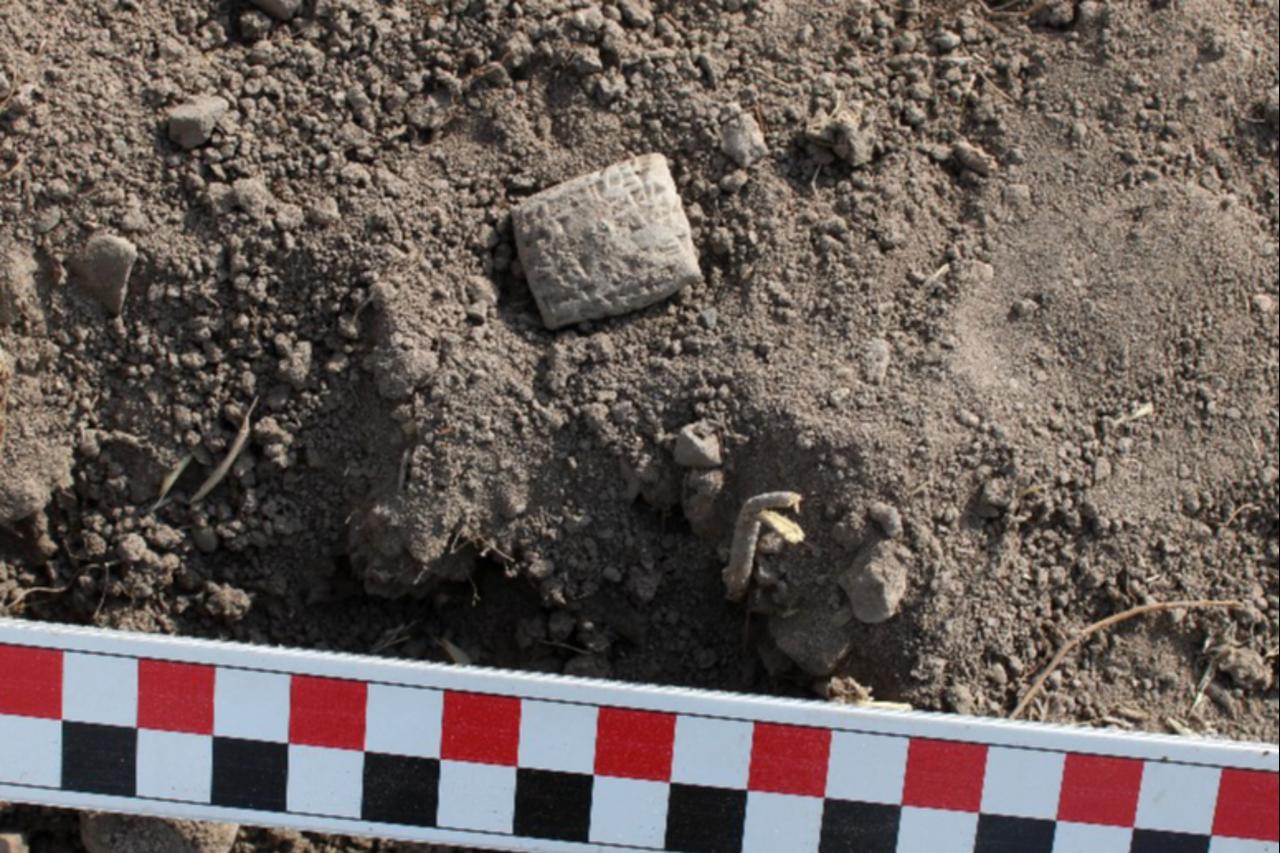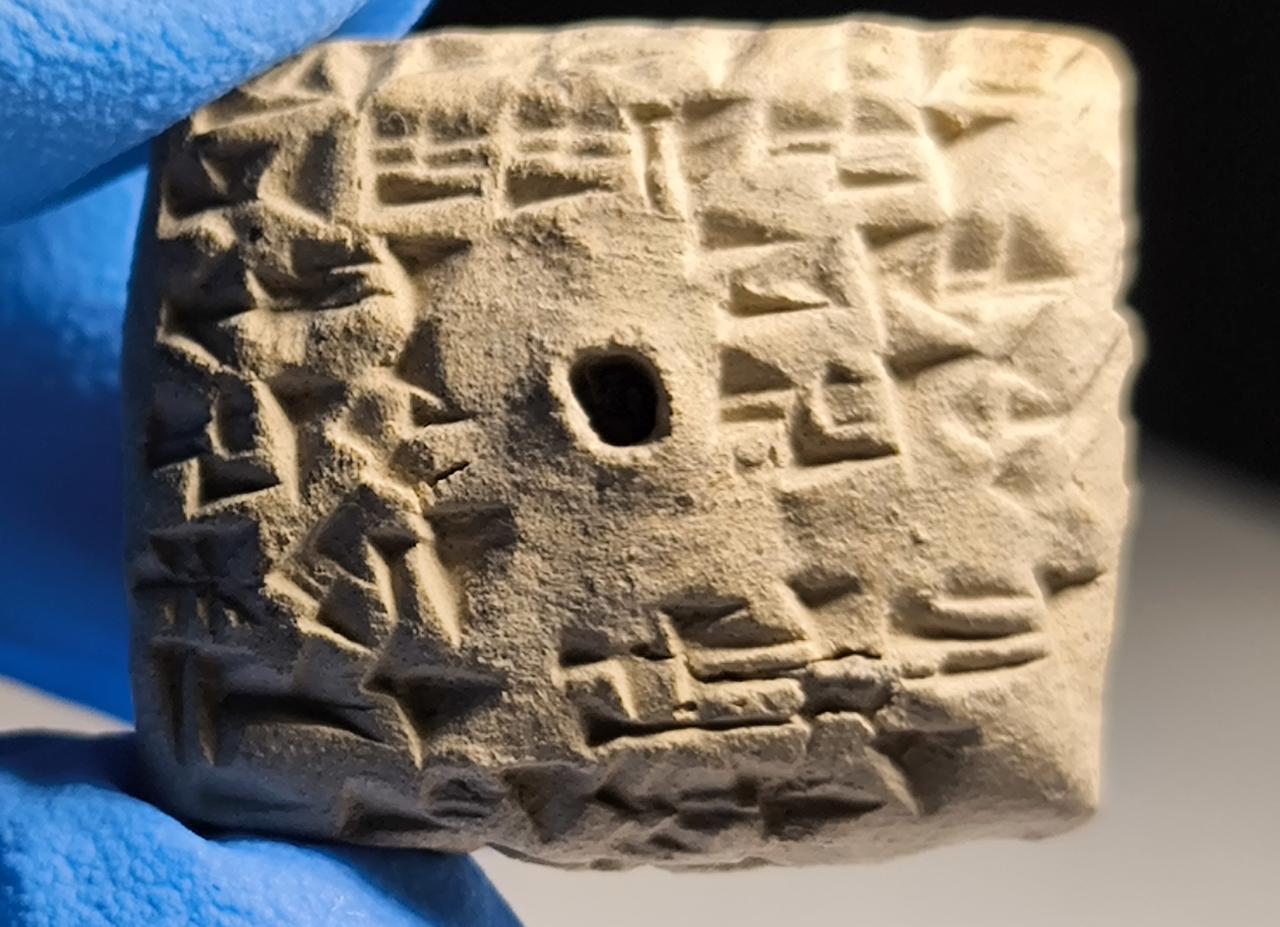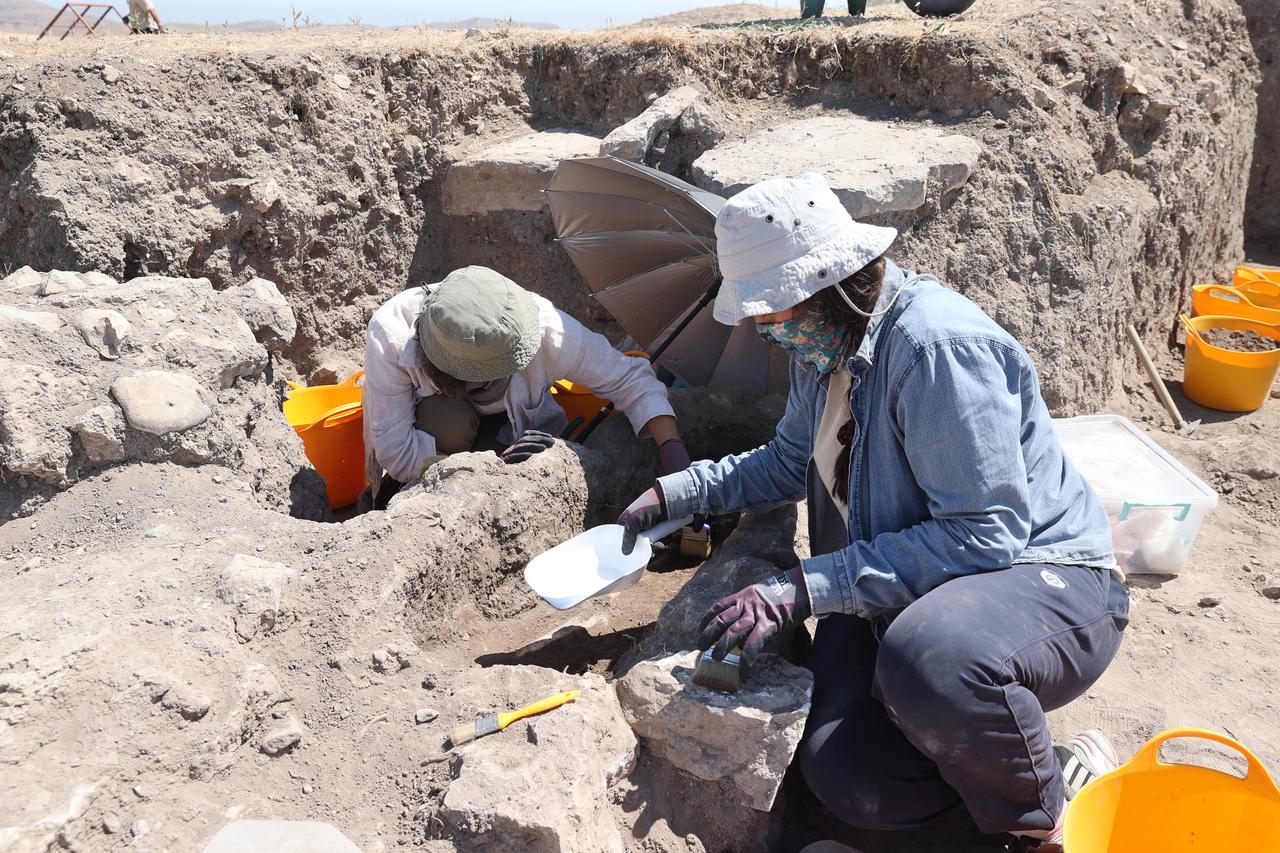
Archaeologists excavating the ancient Hittite settlement of Kayalipinar, located in Türkiye’s central Sivas province, have uncovered a rare clay tablet containing a bird oracle text.
The artifact, found fully intact, describes patterns of bird flight and is believed to have been used for divination purposes by the Hittites, a Bronze Age civilization that ruled much of Anatolia.
Kayalipinar, known as Samuha in ancient texts, is situated in the Yildizeli district and has been under excavation by a team led by Associate Professor Cigdem Maner of Koc University’s Department of Archaeology and History of Art.
The current phase of the project began in early July and brings together 23 specialists from various Turkish and international institutions, including archaeologists, historians, anthropologists, and Hittitologists.

What sets this particular find apart, according to the excavation team, is not just the completeness of the tablet but also a distinct hole in its center, around which traces of string were detected. The presence of wear marks around the hole has led researchers to believe the tablet may have been hung—either on a wall or worn around the neck—during ritual practices.
Preliminary readings indicate that the text refers to the flight of birds, a key element in Hittite divination. The Hittites are known to have used omens and oracular practices to communicate between the human and divine realms. “This text belongs to the category of bird oracles and is particularly significant for understanding Hittite ritual culture,” said Maner.

The site of Kayalipinar, or Samuha, is referenced in ancient Anatolian and Mesopotamian sources as a major cult center of the goddess Ishtar. Most of the cuneiform tablets previously unearthed at the site have been tied to religious or ceremonial functions, and researchers believe the newly discovered oracle text fits within this same context.
Excavators also noted the recovery of over 50 seal impressions from previous seasons, believed to have belonged to Hittite royalty and officials, including kings, princes, and princesses. These artifacts suggest that the site played an important administrative role as well.

Although numerous seal impressions have been found, the structure thought to have functioned as the sealing office has not yet been fully excavated. The team is currently working through Early Christian burial layers in the upper strata to access what lies beneath. Additional Hittite administrative remains have surfaced in nearby trenches, offering further insight into bureaucratic operations at the site.
Alongside text-based artifacts, researchers are collecting clay samples from the seals in hopes of comparing them with finds from other Hittite settlements. This analysis aims to reconstruct patterns of communication and trade among Hittite cities.
Excavations at Kayalipinar have so far revealed traces of multiple historical periods, including the Assyrian trading colony era, Roman rule, early Christian communities, and, of course, the Hittite Empire.
Work is expected to continue through mid-September, with preparations underway to eventually open the site to visitors.